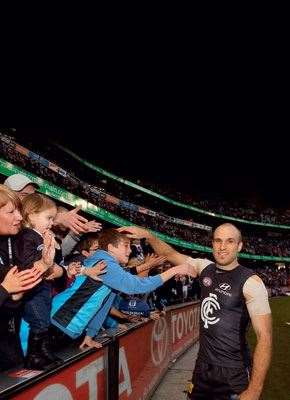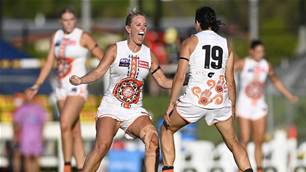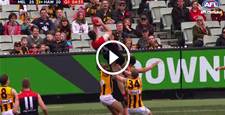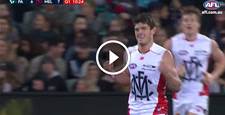Players want a bigger piece of the games revenue pie, but the suits are yet to meet their demands, could we be approaching a NFL-style lockout?
Players want a bigger piece of the games revenue pie, but the suits are yet to meet their demands, could we be approaching a NFL-style lockout?
 Players like Chris Judd fill the stadiums
Players like Chris Judd fill the stadiumsImages: Getty Images
On a visit some years ago to the AFL draft camp (the Canberra-based muster of the sport’s 18-year-old potentials), your columnist remarked to a league staffer that the event bore a resemblance to the NFL’s Draft Combine. It was no coincidence, he replied, because they had wholly imported the concept. Apart from being astounded at how old some of those teenaged footballers looked (one ruckman could’ve been the tallest member of the Kelly Gang), it was at that moment that it occurred to me that the AFL was becoming ever more like a mini-NFL, absorbing and assuming the character traits of America’s oval-ball code.The camp now even goes by the name of the AFL Draft Combine. If you’re going to borrow, do it from the best - the NFL is the best-run sports league in the US. Fortunately for the AFL, it too stands preeminent in its own country – by contrast, the NRL often has the operational quality of European, or maybe even South American, soccer – but there’s a downside to this parallel success.
It all came to the fore in late June with the highly publicised meeting of the AFL Players’ Association. The players sent a clear signal to the league executive that there was a new activism at work, committed to getting a greater share of the AFL’s revenue projections of $1.32 billion over five years.
This touched off the cycles of recrimination: the players already make a lot of money for playing a game … CEO executive Andrew Demetriou, however, makes even more ($2.1 million, it seems) ... The players are the ones we come to watch, so they deserve more ... But the players owe something to reinvestment in the sport ... Where do the clubs fit in all of this?
Watching stars like Luke Ball front the media to talk about revenue splits and solidarity among the players, there’s the feeling of a Rubicon being crossed. The AFL built itself up after the fashion of the NFL – now it seems to be heading down the path of its stresses and strains as well. At time of writing, the NFL was still engaged in its lockout, in which the team owners shut down league activity after they were unable to come to a new pay agreement with the players. The prospects for a new deal had improved by this point, but if the lockout had continued, the season could have been delayed and games lost.
What made, or makes, the NFL lockout unbelievable is the crux of the dispute. Anyone who believes in growing the pie, or the tide that lifts all boats, would be befuddled. The players and owners in the NFL aren’t at loggerheads because the sport is in financial trouble. Rather, it’s a fight over how they divide the $9 billion the NFL money machine churns out every year. It’s a disease of affluence (the NBA, also going through a lockout, is different – at least half of its 30 teams are losing money).
Aussie rules footballers would argue that their league doesn’t emulate the NFL in one key aspect: NFL players received a little under 60 percent of the league’s revenue figure (minus a $1 billion reserve) paid to them in salary and benefits, and even in the post-lockout deal, that figure won’t be much below 50 percent. At present, AFL players receive 22 percent and are negotiating for 25 to 27. (The AFL’s counterpoint: it has to fund grassroots footy, whereas the NFL has the college system to do that.)
As the world-class athletes the AFL would have us believe, AFL players certainly don’t get paid like it. Unions might be receding in many sectors of Australian society, but count on a revival in footy. Aussie rules players were quick to dismiss any possibility of a strike, but this was definitely don’t-think-of-an-elephant territory (some flagged boycotting an event like the Brownlow Medal ceremony). If the players are in earnest, industrial action will naturally follow. And if the AFL really does follow the NFL’s lead, it’s sobering to know that this isn’t a short-term issue – the NFL went on two prolonged strikes in the 1980s before
this latest lockout.
‒ Jeff Centenera
Related Articles

Socceroo star's message to kids: Don't be an AFL player

Updated: AFLW Round 2 preview and schedule








.jpg&h=115&w=225&c=1&s=1)




